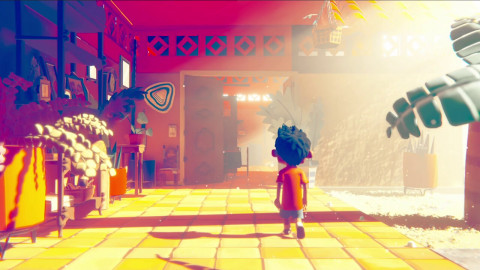
Valve lies at the top of the food chain in the game developing world. They have been a household brand when it comes to game design. One of the biggest games they developed is Counter-Strike: Global Offensive (CSGO) which even had an all-time peak of 1.3M players at one point according to Steam Charts. This is also a big reason why the company is behind the popular virtual skin currency.
Getting to know Valve
Before we dive deeper into virtual skin currency. It helps to get to know the company behind it all.
Valve set off in 1996 with a mission in mind - to provide the best games for people to enjoy. And they did just that by releasing Half-Life in 1998. It went on to grab over 50 awards for the game of the year. It was so popular that it was labeled “Best PC Game Ever” by PC Gamer. Since then, their game portfolio has sold over 100 million units globally!
At its very core, Valve remains to be an entertainment software and tech company. They also have a foothold in groundbreaking tech enjoyed by millions of users across several countries. This growth is primarily driven by an outstanding pool of talent they have pushed the company forward. At present, they have about 300 of the leading writers, programmers, and artists in the gaming industry. Together with an active community of players and partners, Valve continues to grow and dominate the game industry.
Valve products worth mentioning
Here are some of the products that have helped Valve be what it is now.
- Steam - this is their game platform which connects millions of players globally started in 2003. Long before the app stores, Valve already saw the value in having a platform to distribute digital content to a wide audience. It has now transformed into a robust platform between players and game creators with approximately 120 million a month of active players in 2020. The platform boasts about 30,000 different types of games from indie to AAA games.
- Skin trading API - API, or Application Programming Interface, is a method that helps different users connect and exchange information or data. It helps authenticate the process as well. Steam has its own API which is one of the loopholes that led to skin being used as a currency. We will dive into this later but virtual skins can be traded in within Steam to help players improve their character’s looks and help them bring out their unique personalities online.
- CSGO & Dota2 - arguably two of the most popular esports that ever came out from Valve. Counter-Strike was released in 1999 and it immediately took off! Later in 2012 Value released the current Counter-Strike game, Counter-Strike: Global Offensive. According to the VP for Marketing at Valve Doug Lombardi, CSGO remains to be the most played game globally. In fact, it has sold over 25 million units all over the world! This is also the game that popularized the use, acquisition, and eventually the trading of virtual skins. DOTA2 gives CSGO a run for its money as another Valve blockbuster game. It is one of the most played games on Steam. The game offers you the chance to control heroes and battle them out in an even competitive field.
- Valve Index VR kit & Steam Deck - Valve also offers more than just online games because they also develop consumer electronic devices. Valve’s VR technologies are in close collaboration with OLED and LCD display makers to give users a high and quality experience. Steam Deck is another consumer device that Valve will release in December 2021. With their numerous games on PC, Valve will try to cross over to the handheld game console industry this year with the Steam Deck. Reservations are already underway for US, Canada, EU, and UK customers. They get to choose between a 64GB, 256GB, or a massive 512GB device.
- SteamOS - With games and hardware, Valve also offers SteamOS which is basically a public release of Valve’s Linux OS. This allows users to take control of the system and add new software or content to it.
This is only a handful out of many other products in their portfolio. But one could argue it’s some of the most important ones.
The impact of virtual items (skins) has made on Valve as a business
Did you know that Valve earned an estimated $414 million worldwide in 2018 from CSGO alone?
This goes to show how popular the game is and one of the things that propelled it to almost every PC in the world is when they launched the virtual skins in 2013. The virtual skins had a huge positive financial impact on Valve’s portfolio because of the purchase multiplier effect. This was all done inside the Steam Community Market.
The Steam Community Market is the main repository of all cosmetic items from all game titles released inside Steam. The market is a one-stop-shop for buying and selling all these items to help players personalize their gameplay and show off their unique style and character while playing.
Valve earns a modest 20% from the sale inside the Community Marketplace. But this is where it gets interesting. If a player sells a virtual skin for $100, they get $80 and Valve takes their cut of $20. Now the new owner of the skin can sell it again for $100 - they get $80 and Valve takes $20. This can go on for as long as there is demand for the skin. And the best part for Valve, the $80 they get can only be spent inside the Steam Marketplace as well.
This now becomes a never-ending source of passive income for Valve as long as they keep designing and introducing new skins to players.
Valves take on the impact of skins & trading
In 2016, CSGO Skin Gambling was worth approximately $5 Billion according to TechRaptor.
From Community Marketplace, the popularity of virtual skins has taken a life of its own and evolved into a gambling currency. This was a workaround because, inside Steam Marketplace, you can also use your credits inside that platform. They specifically tell players that funds inside Steam Community Market cannot be transferred or withdrawn through another Steam account or even a third-party account or bank.
So what is skin gambling and how is it possible? Skin gambling is basically using virtual skins instead of cash in gambling. Since Valve keeps the funds inside Steam Market, secondary markets started to pop up that allow you to gamble using your virtual skins. This was a loophole that challenged Valve on how to regulate it.
Challenges Valve has faced since skins were introduced
Virtual skin gambling took off and created a whole new industry around it. From the time it was launched in 2011 and before 2016, skin betting went on to cover several product types. From betting on esports matches to different gambling games such as Roulettes, Jackpots, Coin Flips, and others. Among these, sports betting got the biggest share at over 44% and Jackpot, which is a lottery-type game had 25% according to The Lines report
But in 2016, Valve took it upon themselves to crack down on illegal gambling sites. One of Valve’s business development authorities, Erik Johnson came out with a statement denouncing any working relationship with these gambling sites. It even went on to say that they have sent notices to some of the gambling sites to cease operations. The full text of that statement could be found here.
This sent out a ripple across the virtual skin gambling sites that some even went ahead and shut operations down even before they received notice. Polygon even shares that on July 20, 2016, Valve went after 23 big sites with legal actions if they fail to stop operation in 10 days.
Twitch showing their stance on skin gambling
In the same month, Twitch announced that they will not be streaming gambling content with virtual skins because of the Valve crackdown. This was largely in part due to 2 well-known streamers who actively promoted skin gambling - but failed to disclose that they owned the sites they are promoting.
According to Wired, Twitch streamer Tom “Syndicate” Cassell was very successful in promoting virtual skin gambling showing how he won big in a gambling site. But he did not tell viewers that he is the VP of the same site. Another streamer named Moe “m0E” Assad made headlines the wrong way. He also showed how he was winning big but never mentioned he used money from the site itself. He also had inside information on how the games would turn out giving him an unfair advantage.
What lies ahead in the future for virtual game currencies?
Virtual skin currency looks to be here to stay. This is, as long Valve can uphold a positive public opinion for a legitimate use moving forward. Which is not an easy task.
There are still a lot of potential legal issues that might slow down or even stop the trend if not addressed, especially related to virtual skin gambling. Gambling sites using skins as a currency are making things complicated for Valve in the eyes of the public. But at the same time are gambling sites taking steps to make sure that they offer a fair, transparent & legal gambling experience. According to csgoskinbetting.com, there are currently 12 fairly known CSGO gambling sites in operation, and 8 of these have a registered gambling license.
In conclusion, there are a lot of headwinds and tailwinds for virtual game currencies. The industry has a huge demand and clamor already in place. People are looking for legit opportunities to add value & benefit from the virtual skin market. But the market's longevity is hard to predict right now.
Demand is also on the vertical not only with developments made in-game but because of the huge esports industry. Both Yahoo and ESPN got into esports in 2016 further solidifying the reach of the industry into mass audiences across the world.
There is also the issue of minors being addicted to video games and eventually, loot boxes & gambling related to virtual skins. This is one of the downsides of technology when it is advancing faster than rules and regulations. This could be one of the reasons why China put its foot down with online games for their young people. Kids 18 and below will only have a 1-hour window (8 PM-9 PM) on weekends (and holidays) for online video games.
-
 Guest Reporter
Guest Reporter
Sort by:
Comments :0





